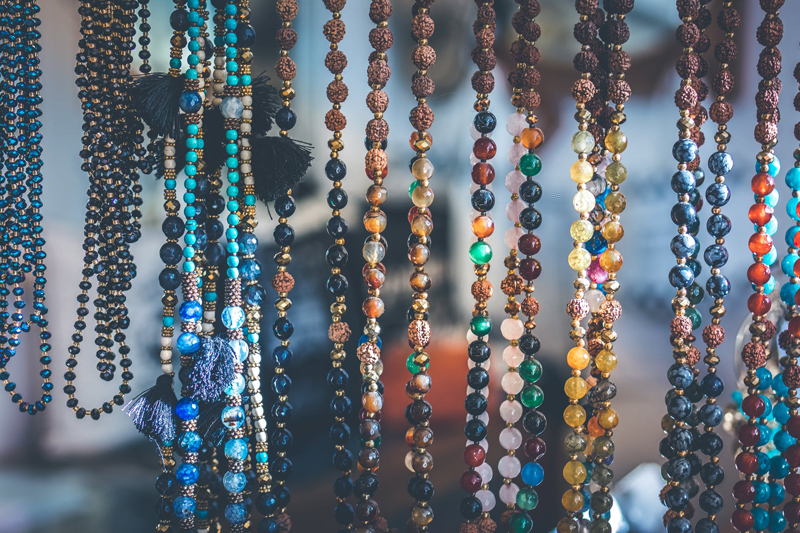Working with Vintage Cabochons


Recently I got some gorgeous vintage cabochons, and made a bezel for one that night.
Glossary-
- Cabochon- a flat backed, undrilled piece for jewelry making. Generally made out of stone, glass or resin. The ones used in this article are glass
- Bezel- the frame that surrounds the edge of a cabochon for using it as jewelry. Bezels in metal work are generally a flat wire soldered to a sheet base, then the stone is set into the frame and the wire is burnished down around the stone to hold it in place. In beadwork, a bezel can be done using almost any off-loom beading method. In the example, it's done with even count tubular peyote.
The cabochons I used are faceted vintage West German glass. They have a metallic coating on the back to really make them sparkle. If you're looking for vintage glass, some of the best pieces are from Japan and West Germany.
The bezel is made using tubular even count peyote with no decreases. This is one of the easiest methods to make a bezel for oval or round cabochons. Instead of making decreases to snug the bezel around the top and bottom of the stone, you switch bead sizes.

You can't really tell by looking at it, but the blue size 11 seed beads are a little smaller than the size 11 silver lined crystal seed beads. Since seed beads can be different sizes from manufacturer to manufacturer, or even within the same manufacturer based on finishes, the bead counts can vary.
At least 3 different bead sizes work best. In this case, size 11/o seed beads, size 11/o Delicas, and size 15/o seed beads.
You start these bezels with your largest beads. In this case, the size 11 seed beads. Make a loop with an even number of beads that will go around the stone. For the blue beads that was 50 beads around, for the crystal, it was 48. Start working in even count peyote. The number of rounds depends on the thickness of the edge of the stone. Since the edge of this one has a nice taper, I used 4 rounds. Since the original loop is 2 rounds (up and down beads) that meant two more rounds. After you work enough rounds that you're ready to start snugging it down for the cabochon, you switch to the next smaller bead. The back of these have two rounds of the size 11s. I stitched the two rounds, then used the smallest beads for the next two rounds. The last round, I went through once more to reinforce it so it was nice and tight. Then weave needle and thread through the beadwork to the top of the bezel. Set the cabochon into the newly created bezel cup. Because I didn't want the beadwork to obstruct too much of that wonderful cabochon, I only did one round of the size 11s, then two of the size 15s for the top. Reinforce by going through the last round again, and then tie off the thread, weave it in, and tie off a couple more places before breaking off the thread.
After I finished making the bezel, I had to choose what to do with it. Adding fringe to the long edge and sewing it to a small pin back would make a pretty brooch, adding fringe a short edge, and making a bail would be a pretty pendant. After discussing it with my daughter, we decided a bracelet would be best.
So I beaded two more cabochons, then stitched them together, and added chevron style daisy chains and a bead and loop clasp to finish the bracelet.
The cabochons used for this project came from Treefrog Beads. She has a wonderful selection at great prices, including this faceted style in lots of colors, and unfaceted cabochons that are the same size in a lot of colors.
You Should Also Read:
Netted Cabochon Bezels
Right Angle Weave Rivoli Bezel

Related Articles
Editor's Picks Articles
Top Ten Articles
Previous Features
Site Map
Follow @shala%5Fbeads
Tweet
Content copyright © 2023 by Shala Kerrigan. All rights reserved.
This content was written by Shala Kerrigan. If you wish to use this content in any manner, you need written permission. Contact Shala Kerrigan for details.






